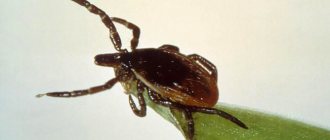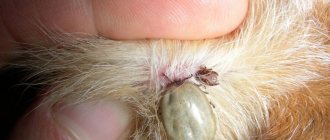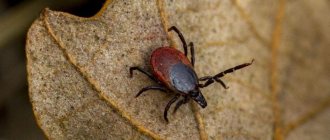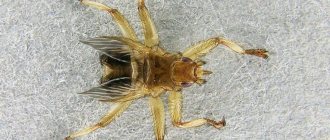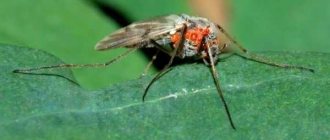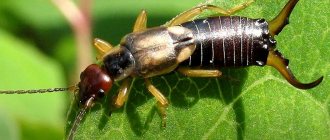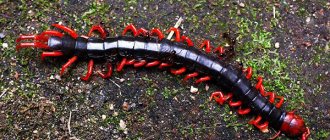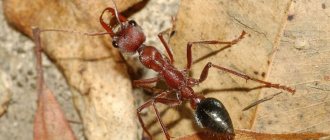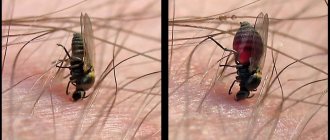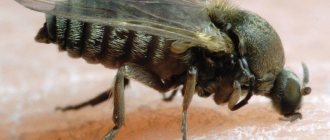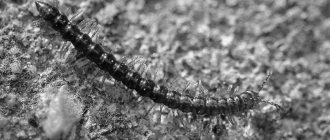Your sleep will not be healthy and relieve fatigue if you have pillow mites. It is impossible to see them on your bed with an ordinary glance. Dust, down or lint eaters - it is more correct to call them, are found in almost every bed. As a rule, mites live in places where dust accumulates, including pillows, mattresses, and carpets. Most people don't even realize that every night they lay their head on a pillow that is "infested" with mites.
Doctors assure that every sixth child with bronchial asthma suffers from an allergy to feather mites . Sleeping on pillows infected with feather mites is not at all safe, because the mite can crawl into a person’s ear, the parasites themselves can feed on the scales of the epidermis (dead skin), and their excrement corrodes and poisons human skin. As a result, a person actively develops various allergic reactions or a disease, which is popularly called scab.
Where do mites come from in bed linen?
Poison eaters are constant companions of humans. Their small size and choice of secluded habitats determined by their feeding habits allow them to remain invisible in our home.
Scientists conducted an experiment and examined soft pillows for pathogenic microorganisms and insects. The results were disappointing: they can contain up to 16 species of fungi, and up to 200 mites can live in 1 cm of a feather!
It’s scary to imagine how many parasites, in addition to mites, can be contained in one standard sleeping pillow.
It is worth saying that insects come along with its filler - feathers and down. Feather mites are widespread in nature; they are inhabitants of chicken coops and poultry farms, where they feed on feathers on live birds.
Insects also lay eggs in the feathers of birds. Thus, if the feather and down intended for filling are poorly processed, there is a high probability that along with the sleeping item you will acquire a whole colony of mites that parasitize humans and domestic animals.
When the parasites' nutrition (feather and fluff) runs out, then the insects may well switch to a sleeping person.
Parasites are also found in padding polyester pillows; these individuals are deprived of the opportunity to receive their usual nutrition, so they are focused on feeding on humans.
Ways to combat dust mites
Since dust mites in residential areas are not a new phenomenon, there are also many ways to independently combat these parasites. Among the most common methods of combating dust mites used by home and apartment owners are:
- Regular dry cleaning of mattresses, blankets and high-pile carpets, carried out to combat dust mites, every year;
- Ironing items that are not completely dried on both sides;
- Daily wet thorough cleaning;
- Weekly washing of bedding and accessories that may contain dust mites;
- The use of woven paths in the house, instead of luxurious carpets, in which house dust mites often settle;
- Thorough cleaning of upholstered furniture;
- Regular ventilation of all rooms, as well as maintaining a humidity level not higher than 40%, which prevents the appearance and reproduction of house dust mites;
- Using bedding and accessories made from synthetic padding or other artificial materials;
- Daily bathing and thorough brushing of pets, even those who are not walked outside.
Since the main habitat for dust mites is hidden places with a large amount of dust or things, it is important to carry out regular cleaning in the apartment, especially in places where a large number of them are stored.
Despite the fact that such methods and methods of combating dust mites are often also effective in many homes and apartments, sometimes they are not enough to get rid of these microscopic parasites completely. In this case, home owners will need to focus on the choice of special preparations designed to effectively combat dust mites, presented on the market by well-known manufacturers. Among the most well-known drugs that have proven effective in the fight against dust mites are:
- Special products for cleaning carpets with an anti-dust mite effect;
- Acaricidal aerosols against bed and dust mites;
- Sprays against bed ticks;
- Special additives for washing, practical in the fight against dust mites.
The purchase of such drugs should be focused on the individual living conditions and the complexity of the situation with the reproduction of bed mites. It is best if one or more of these drugs are recommended by experts in the field of pest control and dust mite control.
These are the specialists who work in our company, known as a professional team providing high-quality bed mite control services. Today we are ready not only to recommend the most effective preparations and means of combating dust mites, but we are also ready to carry out this work with a guarantee of quality and at an attractive price for most clients.
Symptoms of a tick in the bed
As soon as a person’s immunity decreases, malfunctions appear in the body’s important defense systems, and then ticks in pillows will make themselves felt, showing symptoms such as:
- Itching on the body, especially at night;
- The scalp and face become slightly gray with enlarged pores and redness;
- Skin oiliness increases;
- A rash appears on the skin;
- Hair fall out.
If the symptoms remain and are not noticed, then the disease enters the next stage, which manifests itself in the form of an allergy to feather mites:
- Atopic dermatitis, characterized by itching, peeling, and redness of the skin. Requires long-term treatment.
- Urticaria, which appears as pink spots on the skin with severe itching.
- Allergies accompanied by lacrimation, runny nose, cough.
- Unpleasant symptoms disappear after eliminating contact with the pillow.
- A tick in a person suffering from asthma causes frequent attacks of the disease./li>
- Swelling of the airways can be fatal.
If symptoms of insect exposure are detected, you should not self-medicate; a visit to the doctor is necessary.
House bedding and dust mites – what harm can they cause?
Bed mites, photos of which people send from all parts of the globe, are a real pandemic. In any house or apartment, domestic dust mites find favorable conditions for life and reproduction, and their only enemies are severe frosts and direct rays of the sun.
During sleep and rest, approximately 1 g of dead skin particles falls from the body of an adult every week, which is a real feast for dust mites, photos of which can only be examined in detail under a microscope. Like any other living creature, after eating, house dust mites begin to defecate, and the substances contained in the excrement of these small pests cause dust mite allergies. Therefore, painful redness on the surface of a person’s skin is not a consequence of a bed mite bite, but a real allergy to a dust mite. In the case of sensitive people whose bodies are weakened or predisposed to allergies to dust mites, their influence can cause more serious and dangerous diseases.
Causes
We have already said that demodicosis in humans occurs due to the influence of a certain type of mite. These mites live permanently on the skin, usually without causing any harm to their host. The problem begins when the number of ticks increases significantly - after which they can already become parasites, which cause a lot of problems.
Factors that contribute to the development of a negative scenario can be internal and external. Internal causes of demodicosis of the skin include:
- severe weakening of the immune system for various reasons, as well as exhaustion of the body. This may be due to a lack of proper nutrition, past illnesses, stress, etc.;
- viral and microbial diseases of chronic type. These are tuberculosis, hepatitis, toxoplasmosis and much more;
- helminthiases. The activity of helminths also suppresses the immune system, they make it weak;
- autoimmune diseases. As you know, diseases of this type greatly affect the state of the body. Many of the diseases are fatal and cause early death of a person. It is not surprising that against the background of such problems with the body, demodicosis may appear on the face or on another part of the body;
- oncology. With many types of cancer, the body loses its strength and is unable to fight even very simple infections;
- gastrointestinal diseases. For example, very often the disease is associated with the bacteria Helicobacter pylori, which leads to various diseases of the stomach and intestines. Why the bacterium is associated with demodicosis has not yet been understood, but this relationship is already obvious;
- other skin diseases. This includes seborrheic dermatitis, rosacea, acne, etc. If the barrier properties of the skin are already compromised, there are inflammations and other problems, the mite affects it worse;
- hormonal disruptions and changes associated with diseases, as well as natural conditions of the body, for example, pregnancy or lactation.
There are a lot of factors, so demodicosis of the skin often develops against the background of their combination. Women with thin skin are also at risk.
External factors that influence the development of the disease include:
- influence of temperature. The causative agent of demodicosis develops best in warm conditions;
- Unhealthy Lifestyle. These include bad habits, an unbalanced diet, and an extremely high level of stress, which is characteristic of modern man;
- use of low-quality, inappropriate cosmetics. This is especially true for those products that are sold without certificates and are not tested within the framework of legal quality requirements;
- bad ecology. Increased levels of pollution cause the skin's protective functions to become weaker.
External factors often complement internal ones, but sometimes (for example, when choosing the wrong cosmetics) they can act as independent factors.
Symptoms
Demodectic blepharitis can be recognized by the following symptoms:
- Increased uncontrolled lacrimation.
- Feeling of itching, burning and irritation of the eyelids.
- Redness of the affected eyelid and its noticeable thickening, which prevents it from closing and opening.
- Dryness of the mucous membrane of the eyeball.
- The formation of scales on the edge of the eyelid, which, when scratched, begin to peel off and bleed.
- Formation and accumulation of purulent masses in the corners of the eyes.
- Loss of eyelashes, which become brittle and thin as the disease progresses.
- Rapid eye fatigue during work.
With the development of blepharitis, white growths form in the eyelash area , which cannot be completely removed with improvised means.
Having discovered such symptoms, you must immediately contact an ophthalmologist, who will prescribe an effective course of treatment.
Diagnostics
To determine the disease, the patient requires a visual examination. The doctor then interviews the patient and orders a laboratory test. The materials that are taken for research (scrapings) are examined using microscopy - but the diagnosis of demodicosis does not end there. It happens that the result is negative - after which it is prescribed again. This is due to the fact that ticks are especially active in the evening and at night, and the analysis itself is usually taken in the morning, which can reduce the accuracy of the results. In addition, they may be affected by certain cosmetics - the skin should not be treated before the test.
The material is collected not only by scraping. To study the eye shape, several eyelashes are taken from the patient, and there is also a study using a special adhesive tape, which is stuck on at night and checked in the morning.
The examination of the material under a microscope itself takes only a few minutes, so the patient receives the result almost immediately.
Preventive actions
- It is very important to carry out preventive actions that will prevent population growth and reproduction. The most important thing is to carry out wet cleaning as often as possible and prevent dust from accumulating. Wash textile products as often as possible, be sure to iron them. When carrying out wet cleaning, folk remedies can be used as a preventive measure.
- In some cases, the right solution would be to replace the feather pillow with a synthetic one. They are much easier to care for, can be washed, and the likelihood that “neighbors” will appear in it is very small.
- To protect yourself and minimize the contact of ticks with your skin, you can use additional bed covers or covers. Remember that in winter, it is very effective to take pillows and mattresses out into the cold, which allows you to destroy pests with low temperatures. In summer, the same effect is achieved due to direct sunlight. Don't forget to knock out the products.
- When you regularly clean and monitor the cleanliness of the room, the likelihood that pests will increase the population is very small, since such clean conditions are absolutely unfavorable for them.
Causes of appearance and places of accumulation
As the name suggests, the main habitat is dust . Another favorite place for accumulation is feather pillows . Having penetrated the filler, the parasites quickly multiply, forming a colony with dangerous numbers for humans. Parasites also accumulate in the fur of domestic animals. They love temperatures of 18-25C and high humidity, from 55%.
Interesting! Dust mites do not drink water, but absorb it from the air.
Arachnids settle in places where dust accumulates: under the bed and cabinets, in the corners of the room, on baseboards, blinds, in the upholstery of upholstered furniture, on carpets (especially with long pile), in car seats .
The vacuum cleaner bag is an excellent home for parasites. Therefore, it is recommended to use disposable paper bags or containers, and reusable fabric dust collectors should be periodically washed and doused with boiling water.
Fact! In humid areas, up to 30% of the population is allergic to one type of house dust mite.
A magnifying glass will help you determine the presence of parasites yourself . You should inspect the bed frame, baseboards, carpets and floors underneath, and bedding for dogs and cats. Under a magnifying glass, ticks look like small white grains.
What is prohibited to do
If a person is infected, some recommendations must be followed to prevent complications, namely:
- You cannot squeeze pimples, scratch them, or perform any other actions to get rid of them yourself; all treatment should be carried out strictly according to the doctor’s recommendations. Because there is a risk that the infection gets into the deep layer of the skin and then complications cannot be avoided.
- If you are ill, it is forbidden to use decorative cosmetics. When applied, larvae remain on the cosmetics, and this leads to repeated infections.
- Remember that mites need an oily environment, so you should not use creams during this period, thus creating ideal conditions for the infection to multiply and spread to other areas of the skin.
- Massages, scrubs and masks are prohibited.
- During this period, you cannot visit the pool, bathhouse, or sauna.
- When washing, the water should not be hot.
Treatment must be carried out comprehensively, so be sure to pay attention to your diet. Do not eat processed foods, very fatty and fried foods, exclude spicy and canned foods from your diet. Reduce your consumption of coffee and chocolate to a minimum.
